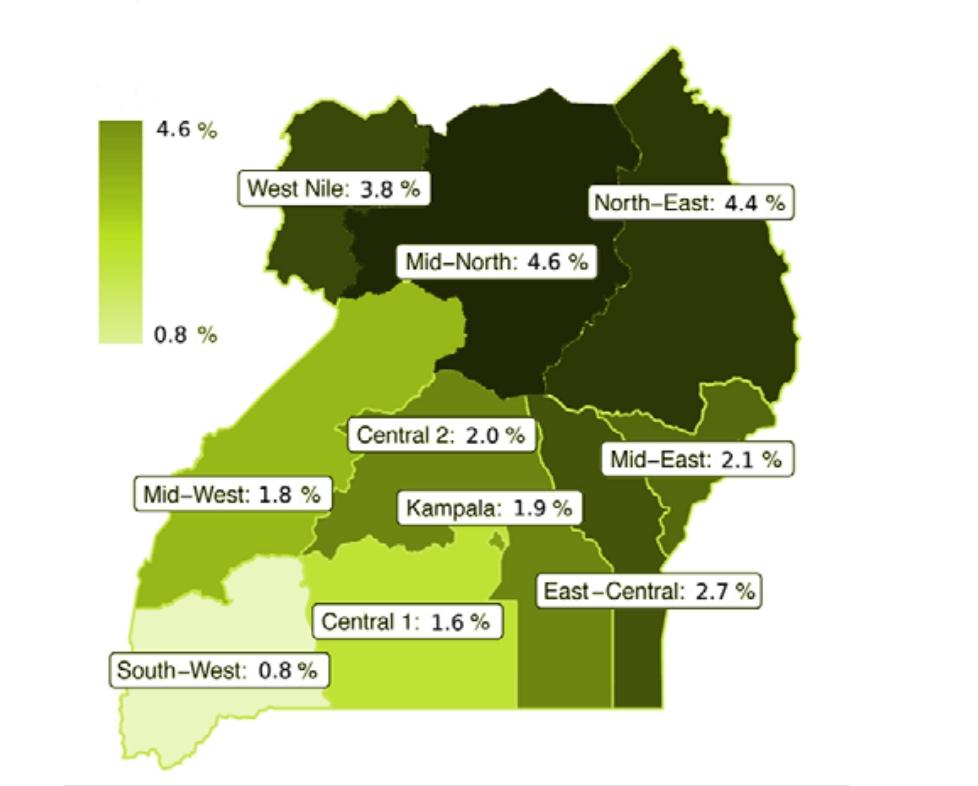Worldwide, statistics show that over 2 billion persons have been exposed to Hepatitis B infection and the majority of these live in sub-Saharan Africa and Southeast Asia.
Hepatitis is inflammation of the liver and may result in serious health complications or death.
Hepatitis can be caused by infectious agents such as viruses, bacteria and non-infectious agents such as toxins, drugs, alcohol. Viral hepatitis is inflammation of the liver caused by viruses.
Read more: Crucial facts about Hepatitis B: its transmission, prevention measures available in Uganda
In Uganda, it is estimated that 4.1% of the population aged 15-64 years has chronic hepatitis B infection, Uganda Population based HIV Impact Assessment survey, (UPHIA, 2016).
The survey indicates that Hepatitis B prevalence however varies from region to region being highest in North and lowest in Southwest.
According to the survey report, the mid-northern region including (among others) districts of Gulu, Lira, Apac, Pader, Kitgum has prevalence of Hepatitis (4.6%) followed by North Eastern districts of Karamoja: Kaabong, Kotido, Abim, Nakapiripit among others at 4.4%.
South Western districts of Kabale, Kisoro, Ntungamo, Kanungu, Rukungiri, Bushenyi and Mbarara have the lowest distribution of Hepatitis infections in Uganda (0.8%) whhile Central districts of Masaka, Lyantonde, Isingiro and Rakai follow at 1.6%.
Hepatitis B spreads by percutaneous or mucosal exposure to infected blood or other body fluids such as vaginal and seminal fluids. In highly endemic areas, HBV is mostly spread from mother to child at birth (perinatal transmission) or through horizontal transmission (exposure to infected blood) from an infected close contact to an uninfected child during the first five years of life.
It can also be spread through sharing of sharps such as needles, instruments used for tattooing and body piercing, razor blades, contaminated surgical instruments (including instruments used for tribal markings), sexual intercourse and blood transfusion (if blood is either not screened or is screened negative during the window period of HBV infection).
Hepatitis B does not spread through greeting, sharing food, utensils, water, clothes, or witchcraft.
Persons who are infected should not be isolated on the basis of this infection. They should therefore not be discriminated in schools, water sources or places of employment.
Hepatitis B vaccination is the main stay for prevention. However, it is important to note that vaccination is only beneficial to individuals who have never been infected with hepatitis B virus.
Read more: Why it is important for Pregnant Mothers to undergo screening for Hepatitis B
All newborn infants – as per the current UNEPI guidelines using the pentavalent vaccine given at 6, 10 and 14 weeks. In
future, Uganda is considering introduction of a birth dose for all newborns.
Adult vaccination may also be offered as long as there is no evidence of chronic infection -after Hepatitis B screening which is now a key recommendation by the ministry of health.
